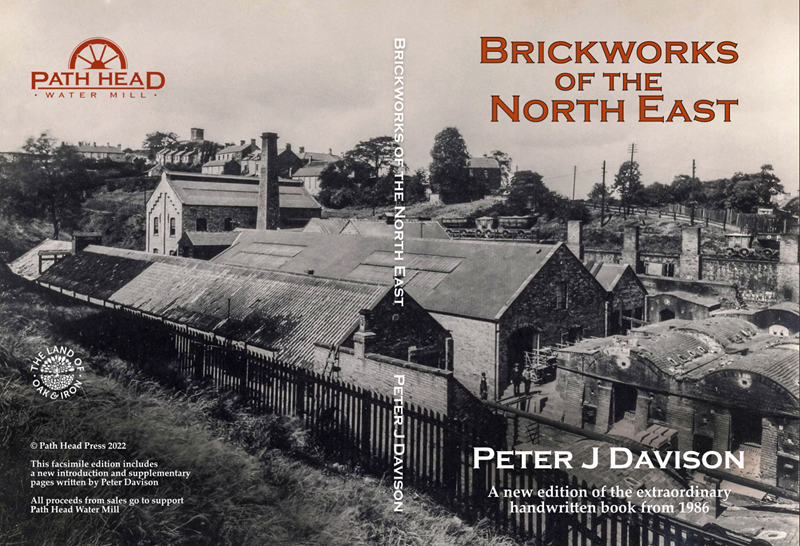
Brickworks of the North East
Creating a new edition of ‘Brickworks of the North East’ came about because I had made contact with Peter Davison while I was working on A People's History of Gibside. As a volunteer with the Land of Oak & Iron project, I had led the Publications Group, bringing out-of-print books back to life. In the lush Derwent Valley, I learnt that the evidence of a rich industrial and social history lay beneath our feet.
I live on Summerhill, which climbs steeply from the Tyne to Path Head Watermill, overlooking Blaydon Burn. The valley is now a popular nature reserve, but sturdy evidence of Cowen’s brickworks is still to be found. When I see photographs like the one on the cover, with our house in the background, it is difficult to believe the extent of the industry that once filled this verdant valley.
And so it is with our history. If we lose the knowledge, we lose our roots, and the understanding of what made us.
Peter’s parents had a rather worn history of Durham in two volumes by William Fordyce, and he remembers how that opened a wider world for him: that’s where his interest in history began. The flame of interest was fanned by Fred Wade’s local history features in the Stanley Gazette. Many of us have similar memories: a book, a person or an object that sparked something in us.
Which brings us to bricks: Path Head Water Mill has a footpath made of Cowen’s bricks, but in 2022, as a result of news of the rebirth of this rare book, Chris Tilney of Consett generously offered to use his collection of local heritage bricks to build a feature wall with his son's bricklaying expertise. The golden glory of those beautiful bricks is something to behold and a lasting memorial to a rich history.
300 pages, weighing just under 1Kg. If you would like to have a copy posted to you, please go to the shop on this website.
If you would like to arrange to collect a copy from Path Head Water Mill in Blaydon, please get in touch.